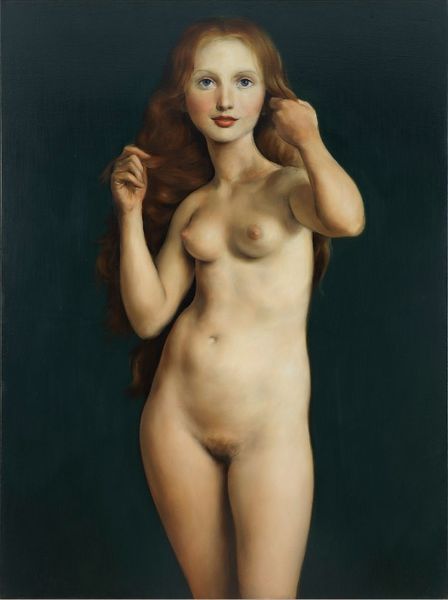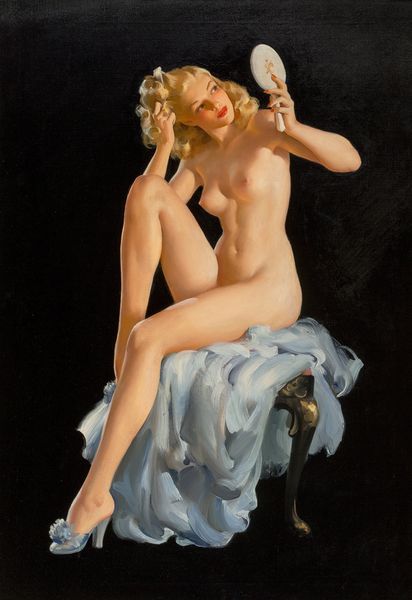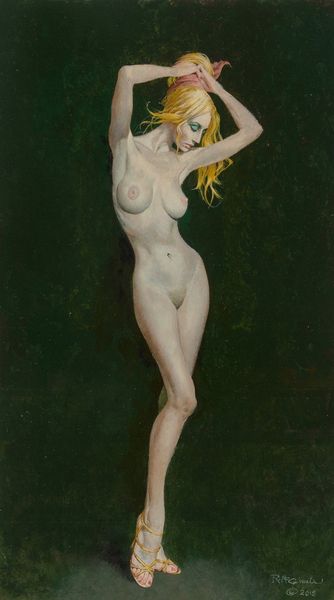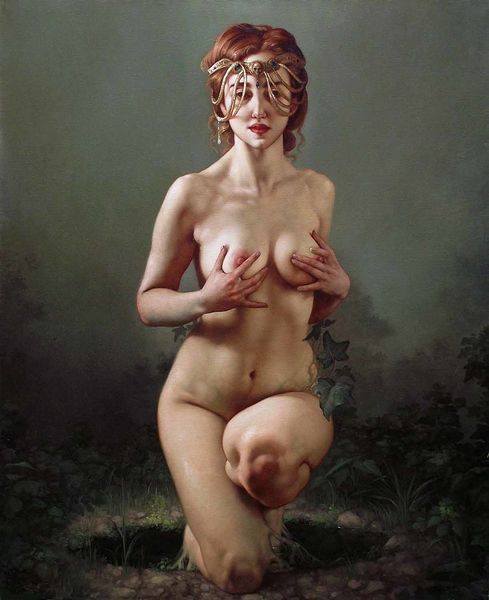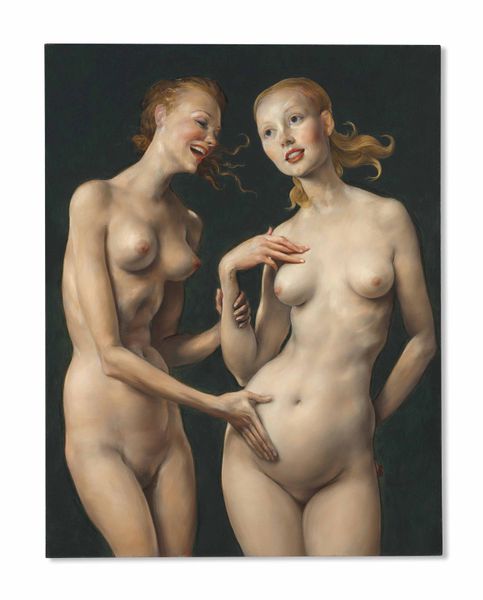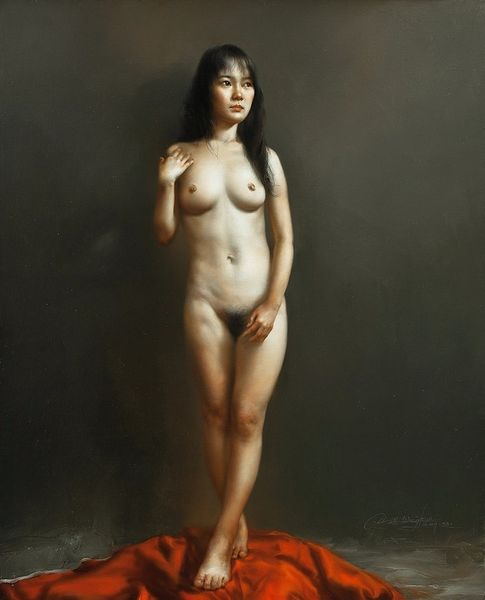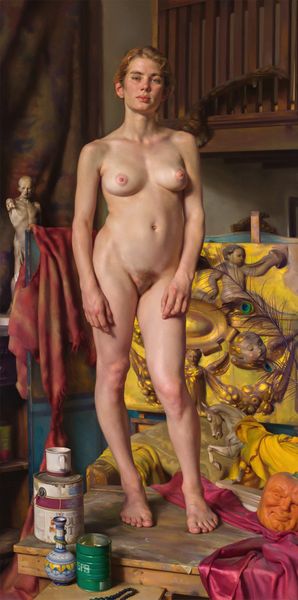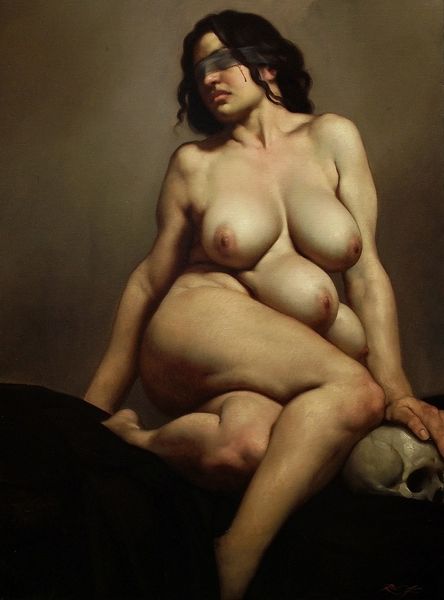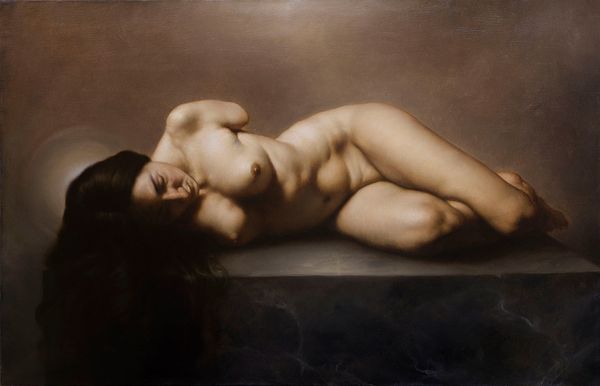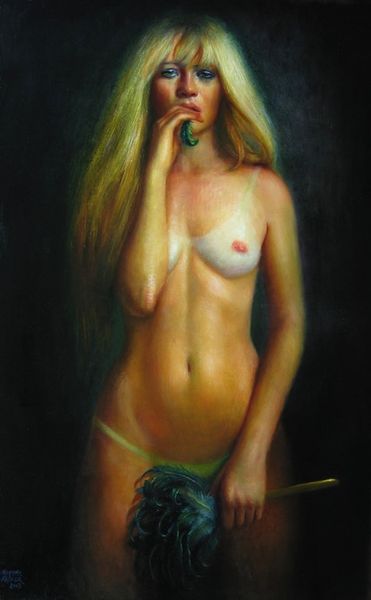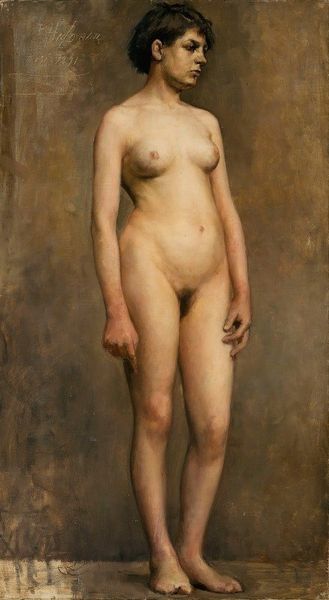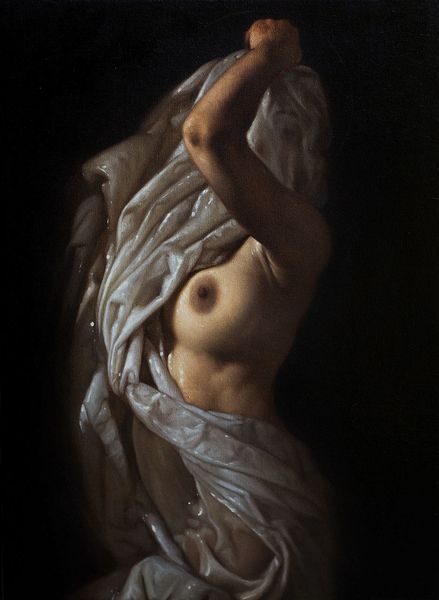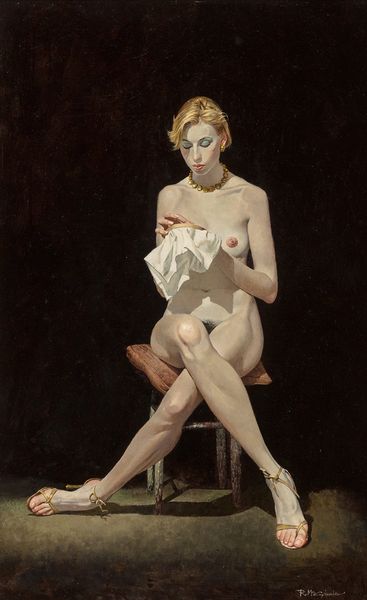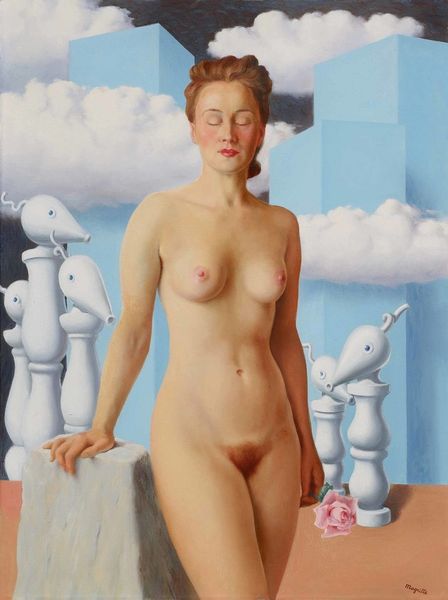
Dimensions: support: 1168 x 914 x 33 mm
Copyright: © John Currin, courtesy Sadie Coles HQ, London | CC-BY-NC-ND 4.0 DEED, Photo: Tate
Editor: This is John Currin's "Honeymoon Nude," currently housed at the Tate. The figure's presentation feels both classic and unsettling to me. What symbols or underlying meanings do you detect in this nude? Curator: The gesture, the fingers splayed across her torso, evokes a vulnerability, almost a primal self-assessment. The black background throws the figure forward. Do you think it represents isolation, or is it a form of timelessness? Editor: I'm thinking more about the isolation. But why do you interpret the gesture as self-assessment rather than, say, flirtation? Curator: Ah, but are those mutually exclusive? The history of the nude, particularly the female nude, is riddled with both the gaze and the internal experience, a constant negotiation of self and other. Something to consider. Editor: Thank you for the insights. I see so much more in it now.
Comments
Join the conversation
Join millions of artists and users on Artera today and experience the ultimate creative platform.
tate 6 months ago
⋮
‘What I do’, Currin has said, ‘is to find a cliché and try to believe in it’. His work rejects the decorous conventions of the female nude by melding art-historical references with the fantasies of advertising and pornography. The woman’s body and pose in Honeymoon Nude recall Renaissance prototypes (especially Botticelli’s Birth of Venus) but she has a recognisably contemporary face. Currin presents the female nude as a commodity, the embodiment of male fantasy. As if emphasising the narcissistic aspects of desire, he bases the woman’s face on his own self-portrait. Gallery label, July 2005
